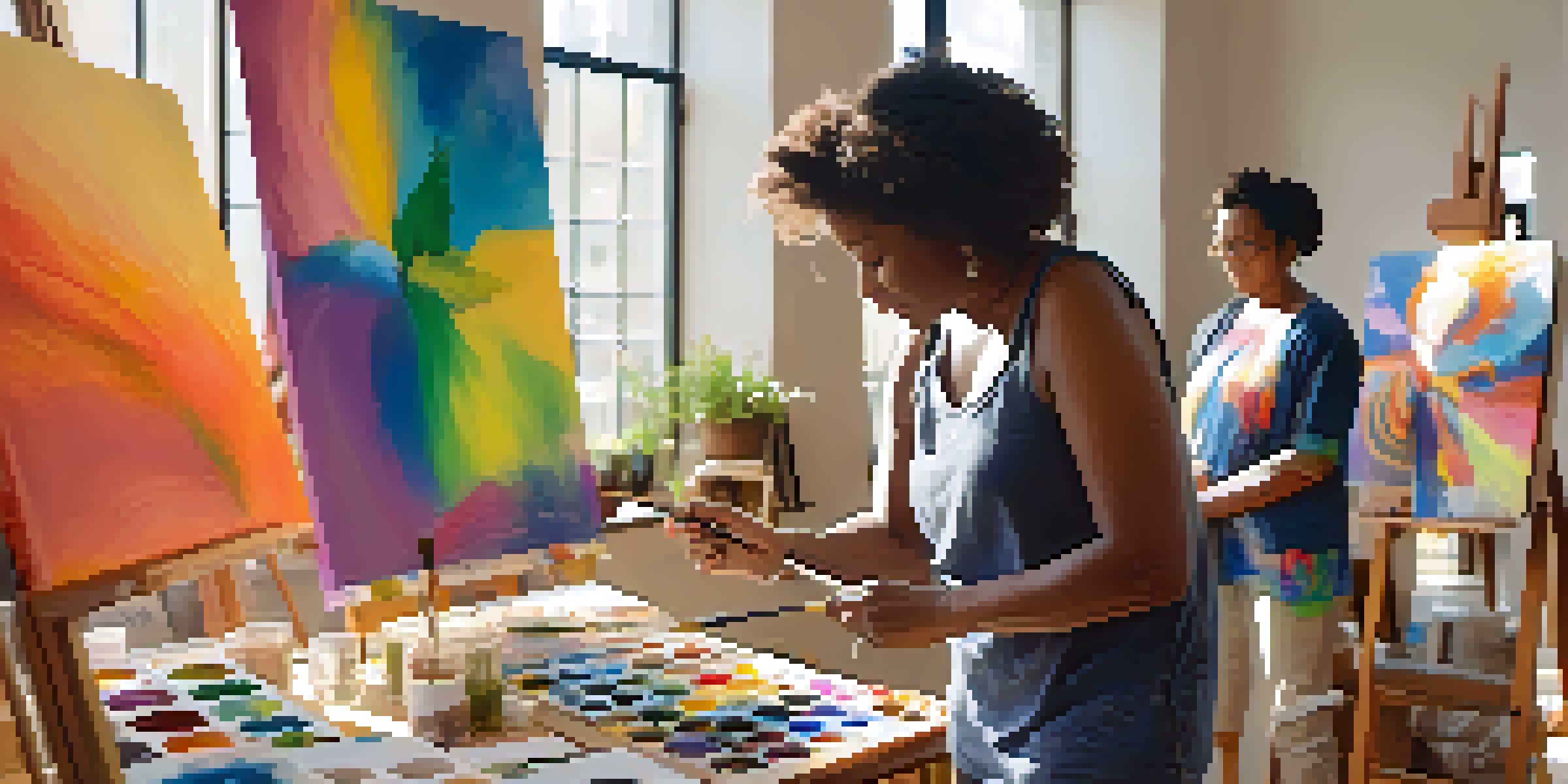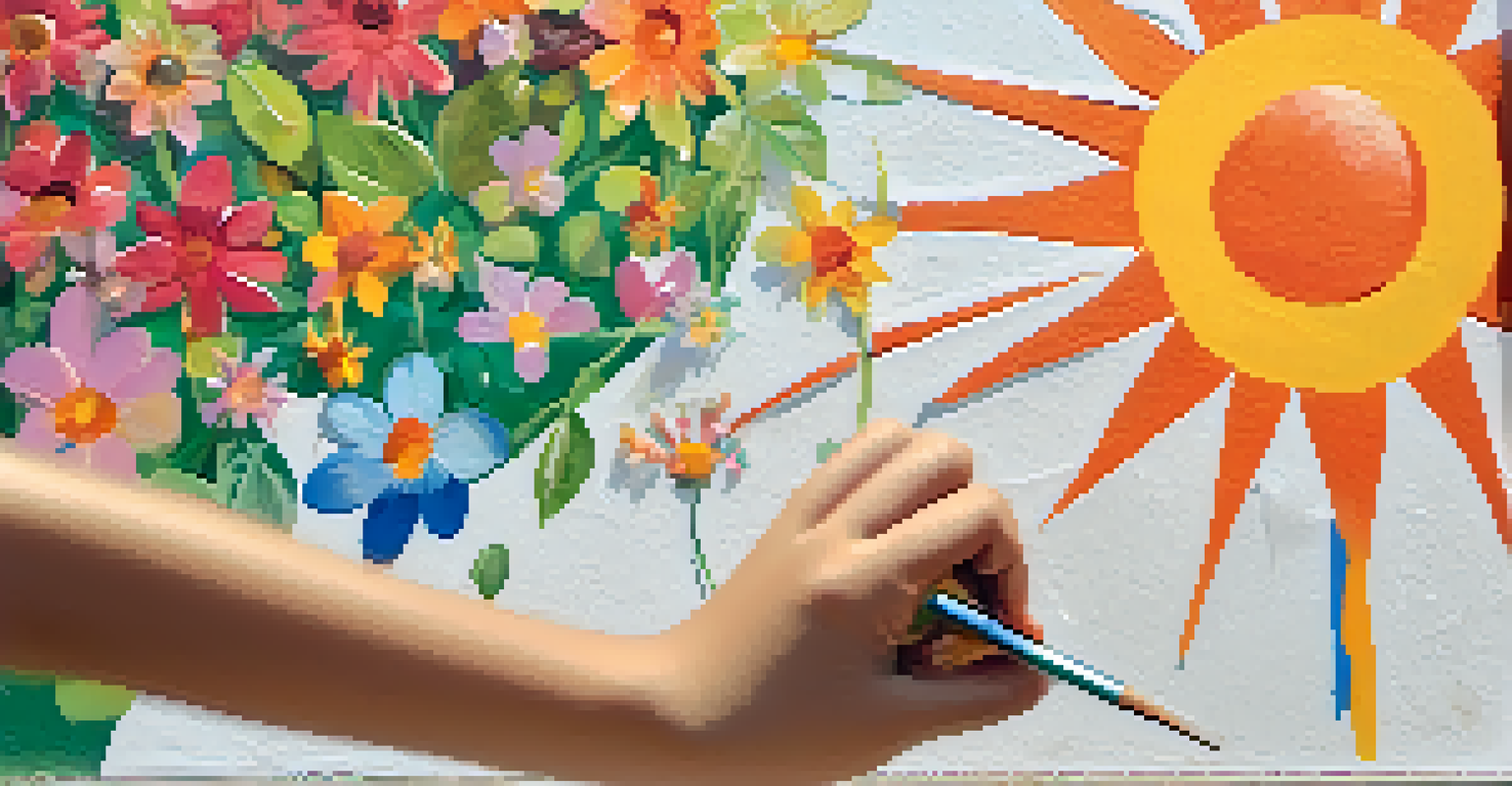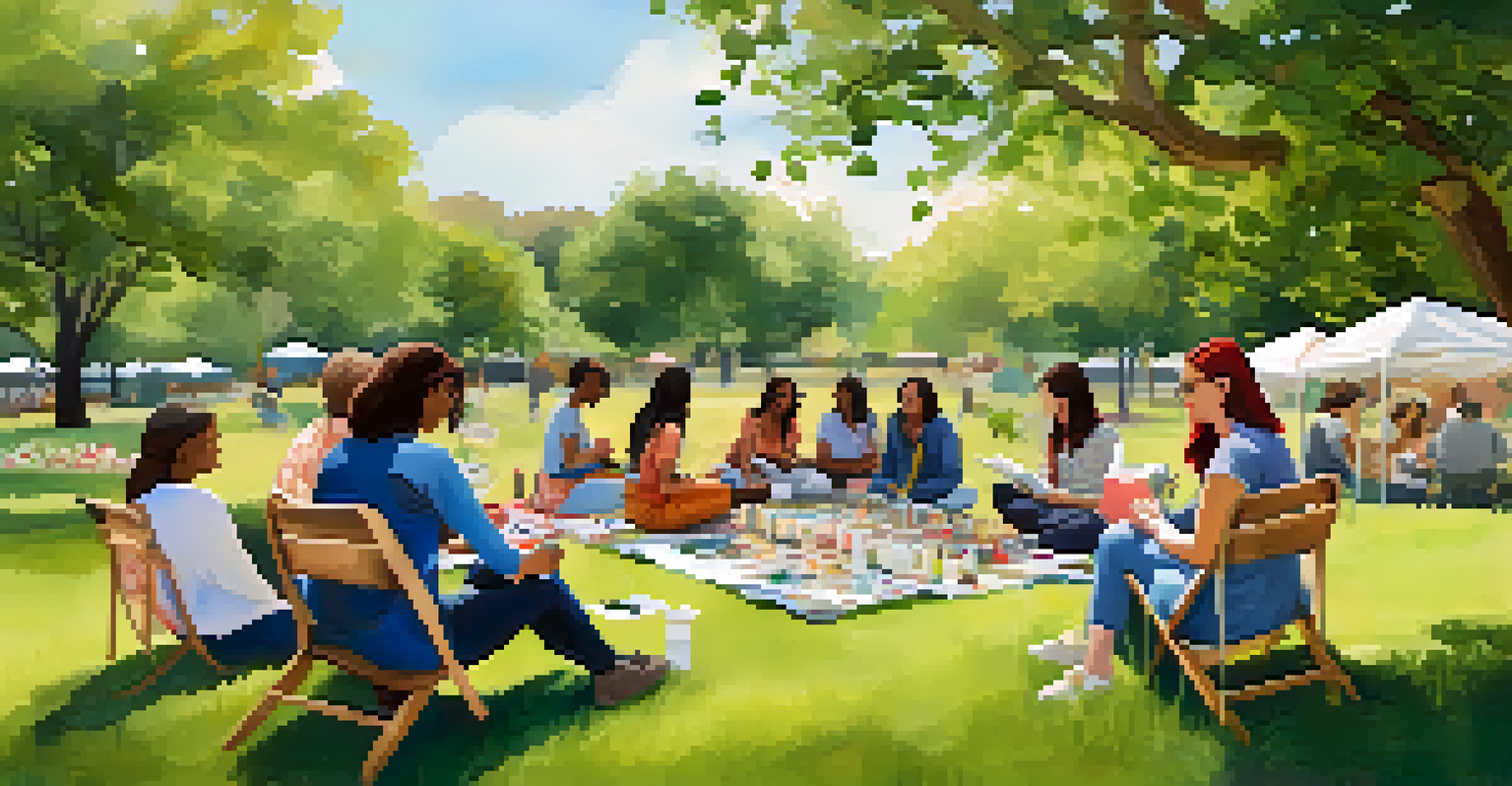Art Therapy in Political Conflict Zones: Healing Through Creativity

Understanding Art Therapy and Its Importance
Art therapy is a therapeutic practice that uses creative expression to help individuals process emotions, trauma, and experiences. In political conflict zones, where stress and anxiety are prevalent, art therapy offers a unique pathway for healing. This form of therapy encourages individuals to articulate feelings that may be difficult to express verbally.
Art can be a powerful catalyst for healing and understanding, allowing individuals to express what cannot be put into words.
By engaging in artistic activities, such as drawing, painting, or sculpting, individuals can explore and communicate their inner worlds. The process of creating art can be both cathartic and empowering, allowing participants to reclaim a sense of agency in their lives. It’s a gentle reminder that even in the darkest of times, creativity can flourish.
Moreover, art therapy not only aids individual healing but also fosters community connections. When people share their artistic expressions, they create a dialogue that transcends words, building bridges in fragmented societies. This communal aspect is vital in areas where traditional forms of communication may be stifled.
The Role of Art Therapy in Trauma Recovery
Trauma is a common experience for individuals living in conflict zones, leading to mental health challenges such as PTSD, anxiety, and depression. Art therapy serves as a non-threatening way for people to confront and work through their trauma. By facilitating a safe space for expression, individuals can explore their feelings and memories without the pressure of verbalizing them.

For instance, a survivor of conflict may find it easier to draw their experiences rather than recount them in detail. This visual representation can often be more powerful than words, allowing for deeper reflection and understanding. By externalizing their pain through art, individuals can begin to process their experiences and move towards healing.
Art Therapy Aids Emotional Healing
Art therapy provides a creative outlet for individuals in conflict zones to process emotions and trauma, fostering personal healing.
Additionally, art therapy can help in normalizing the conversation around trauma. As participants share their artwork, they often find common ground with others, reducing feelings of isolation. This sense of connection can be a crucial step in the recovery process, fostering hope and resilience.
Building Resilience Through Creative Expression
Resilience is the ability to bounce back from adversity, and art therapy plays a significant role in nurturing this quality in individuals affected by conflict. Creative expression empowers individuals to confront their challenges and envision a future beyond their circumstances. This act of creation becomes a statement of hope amid chaos.
Creativity is the greatest expression of liberty.
For example, a group of children in a war-torn area might use art to depict their dreams and aspirations, transforming their pain into visions of possibility. Through these creative outlets, they learn to cope with their situations and build a sense of agency over their lives. This shift in perspective is vital for fostering resilience.
Moreover, art therapy can instill a sense of accomplishment in participants. Completing a piece of art can boost self-esteem and provide a tangible reminder of one’s ability to create amidst turmoil. This newfound confidence can translate into other areas of life, reinforcing the belief that change is possible.
Creating Safe Spaces for Artistic Expression
In conflict zones, creating safe spaces for art therapy is essential. These environments allow individuals to express themselves freely without fear of judgment or reprisal. Safe spaces can be established in community centers, schools, or even temporary shelters, providing a sanctuary for creativity.
Facilitators of art therapy play a crucial role in cultivating these spaces. They must be trained not only in therapeutic techniques but also in cultural sensitivity, understanding the unique dynamics of the communities they serve. This approach ensures that the therapy is relevant and respectful of the individuals’ experiences.
Fostering Community Through Art
Collective art projects help build solidarity and shared identity in communities affected by conflict, promoting dialogue and understanding.
Finally, the importance of confidentiality cannot be overstated. Individuals need to feel secure in sharing their thoughts and feelings, knowing that their vulnerabilities will be protected. When trust is established, participants are more likely to engage fully in the therapeutic process.
Art Therapy as a Tool for Community Building
Beyond individual healing, art therapy serves as a powerful tool for community building in conflict zones. By bringing people together through collective art projects, communities can foster solidarity and shared identity. This communal engagement can help mend the social fabric that conflict often tears apart.
For instance, community murals created by individuals from different backgrounds can symbolize unity and hope. These collaborative art projects not only beautify the environment but also serve as a visual representation of resilience, demonstrating the strength found in coming together.
Furthermore, art therapy can facilitate dialogue among community members, encouraging understanding and empathy. When people share their stories through art, they often find common ground, paving the way for reconciliation and healing on a larger scale.
Challenges in Implementing Art Therapy
While the benefits of art therapy in conflict zones are clear, implementing these programs comes with its own set of challenges. Limited resources, including funding and trained professionals, can hinder the establishment of effective art therapy initiatives. Many organizations working in these areas face logistical difficulties in reaching those in need.
Additionally, cultural perceptions of mental health and therapy can impact the acceptance of art therapy. In some communities, mental health issues may be stigmatized, making it difficult for individuals to seek help. It's crucial for art therapy programs to engage with local leaders and influencers to promote understanding and acceptance.
Challenges in Implementing Programs
Limited resources and cultural stigma can hinder the establishment and acceptance of art therapy initiatives in conflict zones.
Lastly, ensuring the sustainability of art therapy programs is vital. Once established, these initiatives must be continuously supported to provide ongoing healing for individuals and communities. This can involve training local facilitators and integrating art therapy into existing community services.
The Future of Art Therapy in Conflict Zones
Looking ahead, the future of art therapy in political conflict zones holds promise as more organizations recognize its value. Innovative approaches, such as integrating technology and online platforms, can reach broader audiences and provide support where traditional methods may falter. These advancements can help bridge gaps in accessibility, especially in remote or underserved areas.
Moreover, continued research and advocacy for art therapy can lead to increased funding and support from governments and NGOs. By showcasing the positive outcomes of art therapy, stakeholders can rally behind these initiatives, ensuring they receive the attention and resources they deserve.

Ultimately, the resilience of communities affected by conflict can be bolstered through sustained investment in art therapy. By nurturing creativity and expression, we can foster healing, understanding, and hope for a brighter future.